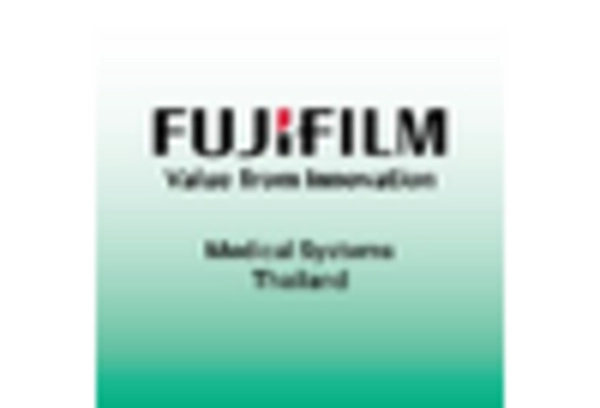Rising Incidence of Stroke Cases
The increasing prevalence of stroke cases in South America is a critical driver for the stroke post-processing-software market. According to health statistics, stroke is one of the leading causes of mortality in the region, with an estimated incidence rate of 200 per 100,000 individuals. This alarming trend necessitates advanced diagnostic tools and software solutions to enhance patient outcomes. As healthcare providers seek to improve their capabilities in stroke management, the demand for sophisticated post-processing software is likely to rise. This software aids in the analysis of imaging data, enabling timely and accurate diagnosis, which is essential in stroke care. Consequently, the stroke post-processing-software market is expected to experience substantial growth as healthcare systems adapt to the increasing burden of stroke cases.
Technological Advancements in Imaging
Technological innovations in medical imaging are significantly influencing the stroke post-processing-software market. The advent of high-resolution imaging modalities, such as MRI and CT scans, has transformed the landscape of stroke diagnosis and treatment. These advancements allow for more detailed visualization of brain structures, which is crucial for effective post-stroke analysis. The integration of advanced software solutions that can process and interpret these complex images is becoming increasingly important. As healthcare facilities in South America invest in state-of-the-art imaging technologies, the demand for compatible post-processing software is likely to surge. This trend indicates a robust growth trajectory for the stroke post-processing-software market, as providers seek to leverage these technologies to enhance diagnostic accuracy and improve patient care.
Growing Awareness of Stroke Prevention
There is a notable increase in public awareness regarding stroke prevention and management in South America, which is positively impacting the stroke post-processing-software market. Educational campaigns and initiatives aimed at reducing stroke risk factors have led to a more informed population. As individuals become more aware of the importance of early detection and timely intervention, healthcare providers are compelled to adopt advanced diagnostic tools. This shift towards proactive healthcare is likely to drive demand for post-processing software that can assist in the early identification of stroke symptoms. Consequently, the stroke post-processing-software market is expected to expand as healthcare systems align with the growing emphasis on preventive care and effective management strategies.
Increased Investment in Healthcare Infrastructure
The ongoing investment in healthcare infrastructure across South America is a significant driver for the stroke post-processing-software market. Governments and private entities are channeling resources into modernizing healthcare facilities, which includes upgrading diagnostic and treatment technologies. This investment is expected to reach approximately $10 billion by 2026, focusing on enhancing the capabilities of hospitals and clinics. As healthcare providers upgrade their systems, the need for advanced post-processing software becomes apparent. This software is essential for analyzing imaging data and facilitating better clinical decision-making. Therefore, the stroke post-processing-software market stands to benefit from this influx of capital, as more healthcare facilities seek to implement comprehensive stroke care solutions.
Collaboration Between Healthcare Providers and Tech Companies
The collaboration between healthcare providers and technology companies is emerging as a vital driver for the stroke post-processing-software market. Partnerships aimed at developing innovative software solutions are becoming increasingly common in South America. These collaborations often focus on integrating artificial intelligence and machine learning into post-processing software, enhancing its capabilities in analyzing complex imaging data. As healthcare providers seek to improve their diagnostic accuracy and operational efficiency, the demand for such advanced software solutions is likely to grow. This trend suggests a promising future for the stroke post-processing-software market, as these partnerships foster the development of cutting-edge technologies that can significantly improve patient outcomes.


















Leave a Comment